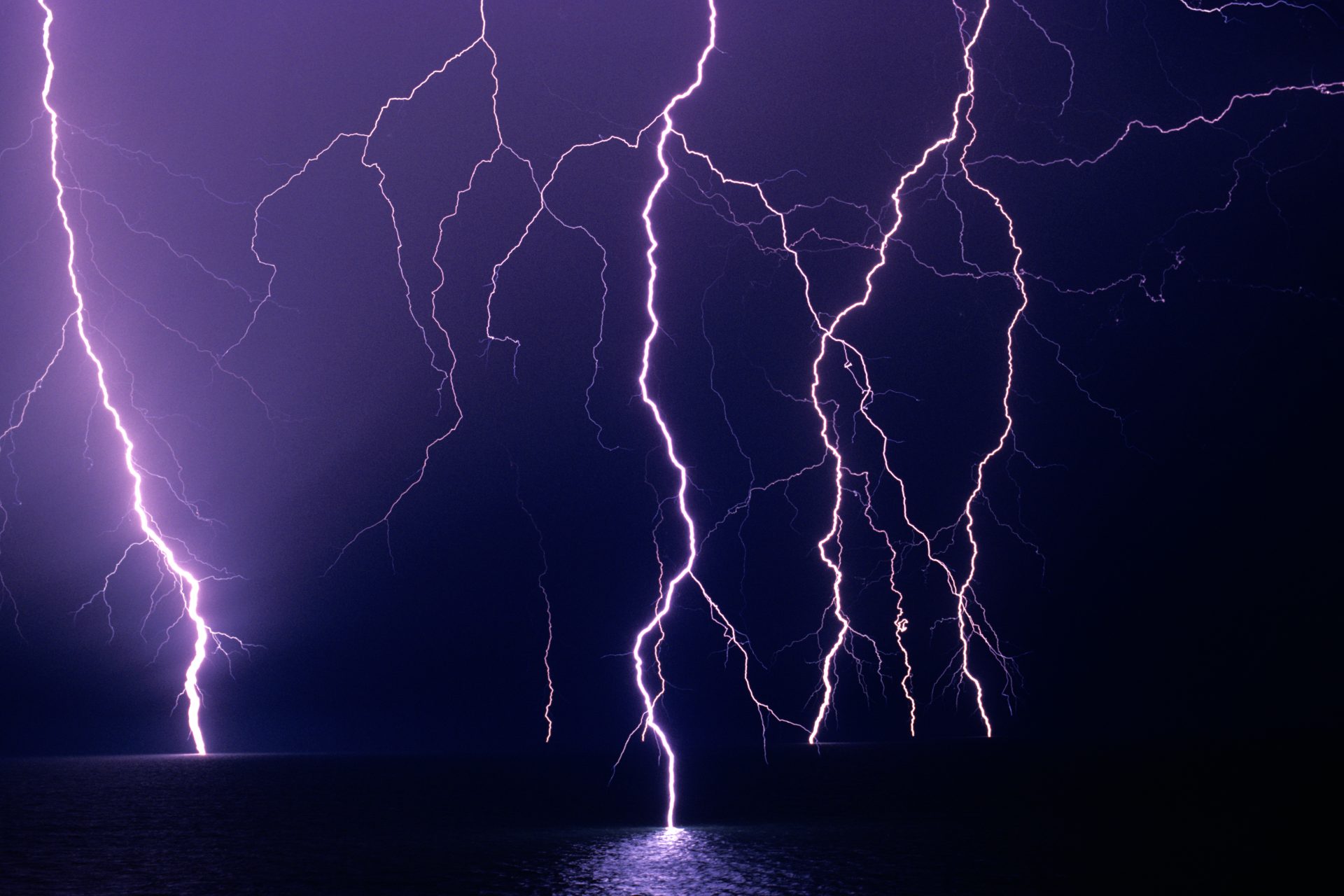Keep safe this summer, follow these tip to lower your chance of being struck by lightning
The chances of being struck by lightning are less than one in a million, according to the Centers for Disease, Control and Prevention (CDC).
However, 14 people have died from lightning strikes in the US in 2022, according to the National Weather Service.
Considering the country’s population (over 300 million), 14 people is a tiny group. It’s also important to note that there are about 25 million lightning strikes in the US per year and 90% of people who do get struck by lightning, survive.
Image: Ori Hirsh/Unsplash
Nevertheless, the effects of lightning strike can be serious and long-lasting. Survivors have experienced debilitating injuries, burns and ongoing disability, including symptoms like seizures and memory loss.
But there’s ways to avoid getting struck by lightning. That’s why lightning safety education is important. Here are a few things you can do to reduce your chances of getting struck by lightning.
The National Weather Service has a simple but effective slogan: "When thunder roars, go indoors." As soon as you hear thunder, see lightning or the sky looks threatening, you should head indoors as quickly as possible.
"The most important thing is that you're safe inside of a large substantial building or a fully enclosed, metal-top vehicle," Ron Holle, a meteorologist and lightning safety specialist at the National Lightning Safety Council, told CNN.
Image: Joe Ciciarelli/Unsplash
Tents or sheds are not safe from lightning. If you are camping or at the beach, with no access to a building when you hear thunder, you should go to your car.
If you’re taking shelter in your car, you should wait 30 minutes from the last time you heard thunder to leave the vehicle, according to the weather service.
Image: Tyler Harris/Unsplash
If you manage to get inside a building, the next step to be safe is to close the windows and avoid using corded electrical devices, according to the National Weather Service. You should also stay away from balconies, porches, garages, and doors to the outside.
Image: Olivier Lance/Unsplash
"You don't want to be attached to wiring and plumbing, like holding a wired telephone, or holding onto an appliance when lightning is hitting the house," explained Holle. "Having your hands attached to flowing water in the sink or bathtub also poses a risk”, he said.
If the outside isn't safe for humans during a storm, it's also not safe for pets. Take your pets inside as soon as possible when you hear thunder. Dog houses do not provide protection from lightning strikes and dogs tied to trees are in particular danger, according to the weather service.
Image: Conner Baker/Unsplash
Most large boats with cabins are pretty safe during a thunderstorm, according to the weather service. However, small boats with no cabin are unsafe. The majority of lightning injuries and deaths on boats, occur on this type of boat.
The service advises people to not go boating when thunderstorms are forecast. If you hear thunder while on the water, you should return to shore as quickly as possible and ideally get at least 100 yards from shore.
If you can't head to shore, you should drop anchor, get as low as possible and stay inside the cabin, keeping away from any metal surfaces.
Image: Wai Siew/Unsplash
If you’re swimming in the sea and you’re boat has no cabin, you're actually better off staying in deep water during the storm than returning aboard, according to the weather agency.
Image: Al Elmes/Unsplash
If getting indoors isn't possible, there are still a few things that may slightly lessen your risk. In a thunderstorm, avoid open fields, the top of a hill, or a ridge top, the weather service says.
Image: Rachel Sanner/Unsplash
Likewise, you should stay away from tall, isolated objects like trees, and immediately leave any bodies of water. Of course, you'll also want to avoid any wet or metal items that could conduct electricity.
Image: Presentsquare/Unsplash
Low areas like valleys and ravines are a safer bet. If you're in a group, spread out to prevent any current from traveling between people, the weather service says. And don't lie flat on the ground.
The key to lightning avoidance strategy is awareness and planning. Read the weather forecast and know if thunderstorms are expected in the places you're going to be.
If someone around you is struck by lightning, immediately call 911. People who have been struck by lightning don't carry an electrical charge, so it's safe to touch and move them. Get them indoors if possible. The victim's heart or breathing may have stopped and they may need CPR.
There are also organizations providing resources for survivors, like Lightning Strike and Electric Shock Survivors International, which promotes medical research and ongoing support for survivors of lightning and electrical injury.
Image: Micah Tindell/Unsplash
More for you
Top Stories



































